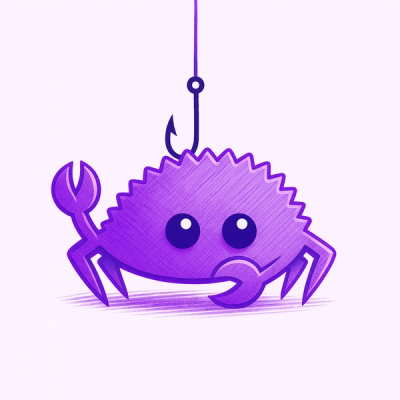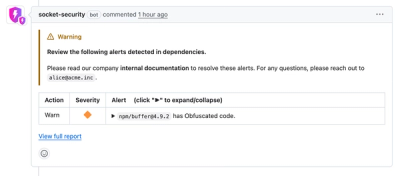
Security News
pnpm 10.16 Adds New Setting for Delayed Dependency Updates
pnpm's new minimumReleaseAge setting delays package updates to prevent supply chain attacks, with other tools like Taze and NCU following suit.
org.webjars.npm:ion-autocomplete
Advanced tools
Configurable Ionic directive for an autocomplete dropdown.
#Table of contents
You can find a live demo on Codepen or see it in action in the following image:

For one of my private projects I needed an autocomplete component in Ionic. I searched a lot and found some plain Angular autocompletes, but these had too much other dependencies and mostly didn't look that good within Ionic. Then one day I stumbled upon the ion-google-place project which was exactly what I was looking for, except that it was just working with the Google Places API. So I forked the project and made it configurable such that you can add the service you need. The differences between the ion-google-place project and the ion-autocomplete are listed in the features.
The ion-autocomplete component has the following features:
bower install ion-autocomplete --save
ion-autocomplete javascript and css file into your HTML file:<script src="bower_components/ion-autocomplete/dist/ion-autocomplete.js"></script>
<link href="bower_components/ion-autocomplete/dist/ion-autocomplete.css" rel="stylesheet">
ion-autocomplete as a dependency on your Ionic app:angular.module('myApp', [
'ionic',
'ion-autocomplete'
]);
The ion-autocomplete component is running with the following Ionic versions:
| ion-autocomplete version | Ionic version |
|---|---|
| 0.0.2 - 0.1.2 | 1.0.0-beta.14 |
| 0.2.0 - 0.2.1 | 1.0.0-rc.3 |
| 0.2.2 - latest | 1.0.0 |
To use the ion-autocomplete directive in single select mode you need to add the following snippet to your template:
// usage with the element restriction
<ion-autocomplete ng-model="model" />
//usage with the attribute restriction
<input ion-autocomplete type="text" readonly="readonly" class="ion-autocomplete" autocomplete="off" />
If you want to use it in multiple select mode you need to add the following snippet to your template:
// usage with the element restriction
<ion-autocomplete ng-model="model" multiple-select="true" />
//usage with the attribute restriction
<input ion-autocomplete type="text" readonly="readonly" class="ion-autocomplete" autocomplete="off" multiple-select="true" />
Check out the next chapter on how to configure the directive.
items-methodYou are able to pass in a callback method which gets called when the user changes the value of the search input field. This is normally a call to the back end which retrieves the items for the specified query. Here is a small sample which will return a static item of the query:
Define the callback in your scope:
$scope.callbackMethod = function (query) {
return [query];
}
And set the items method on the directive:
<ion-autocomplete ng-model="model" items-method="callbackMethod(query)" />
You are also able to return a promise from this callback method. For example:
$scope.callbackMethod = function (query) {
return $http.get(endpoint);
}
Note that the parameter for the callbackMethod needs to be named query. Otherwise the callback will not get called properly.
If you want to also retrieve the ComponentId then you need to add a second parameter called componentId:
$scope.callbackMethod = function (query, componentId) {
if(componentId == "component1") {
return $http.get(endpoint1);
}
return [query];
}
items-method-value-keyYou are able to set the items-method-value-key attribute which maps to a value of the returned data of the items-method. If for
example your callback method returns the following object:
{
"items" : [ {
"name" : "item1"
},{
"name" : "item2"
},
...
]
}
Then when you do not specify the items-method-value-key there will be no list displayed when you search for items in
the search input field. You need to set the items-method-value-key to items such that the items are shown. If you right
away return an array of items then you do not need to set the items-method-value-key.
item-value-keyYou are able to set the item-value-key attribute which maps to a value of the returned object from the items-method. The value
is then saved in the defined ng-model. Here an example:
The items method returns the following object:
[
{
"id": "1",
"name": "Item 1",
...
}
...
]
And now you set the following item-value-key:
<ion-autocomplete ng-model="model" item-value-key="id" />
Now when the user selects the Item 1 from the list, then the value of the objects id is stored in the ng-model. If
no item-value-key is passed into the directive, the whole item object will be stored in the ng-model.
item-view-value-keyYou are able to set the item-view-value-key attribute which maps to a value of the returned object from the items-method. The
value is then showed in both input fields. Here an example:
The items-method returns the following object:
[
{
"id": "1",
"name": "Item 1",
...
}
...
]
And now you set the following item-view-value-key:
<ion-autocomplete ng-model="model" item-view-value-key="name" />
Now when the user selects the Item 1 from the list, then the value of the objects name is showed in both input fields. If
no item-view-value-key is passed into the directive, the whole item object will be showed in both input fields.
multiple-selectYou are able to set the multiple-select attribute to true to enable the multiple select feature. Here an example:
<ion-autocomplete ng-model="model" multiple-select="true" />
Then the user is able to select multiple items out of the returned items and also delete them again. The given ng-model is an
array if multiple items are selected.
items-clicked-methodYou are able to pass a function to the items-clicked-method attribute to be notified when an item is clicked. The name of the
parameter of the function must be callback. Here is an example:
Define the callback in your scope:
$scope.clickedMethod = function (callback) {
// print out the selected item
console.log(callback.item);
// print out the component id
console.log(callback.componentId);
// print out the selected items if the multiple select flag is set to true and multiple elements are selected
console.log(callback.selectedItems);
}
And pass in the callback method in the directive:
<ion-autocomplete ng-model="model" items-clicked-method="clickedMethod(callback)" />
Then you get a callback object with the clicked/selected item and the selected items if you have multiple selected items (see The multiple-select).
items-removed-methodYou are able to pass a function to the items-removed-method attribute to be notified when an item is removed from a multi-select list. The name of the
parameter of the function must be callback. It is similar to items-clicked-method. This attribute has no defined behaviour for a single select list.
Here is an example:
Define the callback in your scope:
$scope.removedMethod = function (callback) {
// print out the removed item
console.log(callback.item);
// print out the component id
console.log(callback.componentId);
// print out the selected items if the multiple select flag is set to true and multiple elements are selected
console.log(callback.selectedItems);
}
And pass in the callback method in the directive:
<ion-autocomplete ng-model="model" items-removed-method="removedMethod(callback)" />
Then you get a callback object with the removed item and the selected items if you have multiple selected items (see The multiple-select).
model-to-item-methodThis method is used if you want to prepopulate the model of the ion-autocomplete component. The prepopulated model needs
to be have the same data as it would be saved when you select the items by hand. The component then takes the model values
and calls the specified model-to-item-method to resolve the item from the back end and select it such that it is preselected.
Here a small example:
Define the model-to-item-method in your scope:
$scope.modelToItemMethod = function (modelValue) {
// get the full model item from the model value and return it
var modelItem = getModelItem(modelValue);
return modelItem;
}
And set the model-to-item-method on the directive:
<ion-autocomplete ng-model="model" model-to-item-method="modelToItemMethod(modelValue)" />
You are also able to return a promise from this callback method. For example:
$scope.modelToItemMethod = function (modelValue) {
return $http.get(endpoint + '?q=' + modelValue);
}
Note that the parameter for the model-to-item-method needs to be named modelValue. Otherwise the callback will not get called properly.
The component id is an attribute on the ion-autocomplete component which sets a given id to the component. This id is then returned in
the callback object of the items-clicked-method and as a second parameter of the items-method.
Here an example:
<ion-autocomplete ng-model="model" component-id="component1" />`
You are able to set this is on each component if you have multiple components built up in a ng-repeat where you do not want to have multiple items-method
for each component because you want to display other items in each component. You will also get it in the items-clicked-method callback object such that you just
need to define one callback method and you can distinguish the calls with the componentId attribute right inside the method.
You are also able to set the placeholder on the input field and on the search input field if you add the placeholder
attribute to the directive:
<ion-autocomplete ng-model="model" placeholder="Enter the query to search for ..." />`
You are also able to set the cancel button label (defaults to Cancel) if you add the cancel-label attribute to the directive:
<ion-autocomplete ng-model="model" cancel-label="Go back" />`
You are also able to set the select items label (defaults to Select an item...) if you add the select-items-label attribute to the directive:
<ion-autocomplete ng-model="model" select-items-label="Select your items..." />`
You are also able to set the selected items label (defaults to Selected items:) if you add the selected-items-label attribute to the directive:
<ion-autocomplete ng-model="model" selected-items-label="Selected:" />`
You are also able to set an own template for the autocomplete component (defaults to '') if you add the template-url attribute to the directive:
<ion-autocomplete ng-model="model" template-url="templates/template.html" />`
This way you are able to override the default template (the searchContainerTemplate variable here)
and use your own template. The component will use the default template if the template-url is not defined.
You are able to use all the configurable attributes as expressions in your template. I would advise to use the default template as base template and then add your custom additions to it.
Please also take care when you change how the items are shown or what method is called if an item is clicked, because changing this could make the component unusable.
The template itself will be loaded with the $ionicTemplateLoader and this will also use the Angular $templateCache.
If you change the template with the template-url and want to pass in additional data then you are able to set
the template-data attribute on the directive. If you for example have a templateData.testData expression in your own
template like this:
...
<div>{{templateData.testData}}</div>
...
Then you need to set the proper object on your Angular scope the following way:
$scope.templateData = {
testData: "test-data"
};
And now you just need to add the templateData attribute on the directive:
<ion-autocomplete ng-model="model" template-data="templateData" />`
Then the expression in your template gets resolved properly.
If you want to display a loading icon when the items-method promise gets resolved then you need to set the loading-icon
attribute to a value given by the Ionic spinner: http://ionicframework.com/docs/api/directive/ionSpinner. Then the spinner should
be shown at the right side of the search input field.
All value keys are parsed with the Angular $parse service such that you are able to use expressions like in the following
example:
[
{
"id": "1",
"name": "Item 1",
"child": {
"name": "Child Item 1",
}
...
}
...
]
This would be the JSON model returned by the items-method and in the next snippet we define that we want to show the
name attribute of the child object:
<ion-autocomplete ng-model="model" item-view-value-key="child.name" />
Check them here: Release notes
When I first searched for an Ionic autocomplete component I just found the project from Danny. So please have a look at his ion-google-place project as this project here is a fork of it. At this point I want to thank him for his nice work.
This Ionic autocomplete directive is available under the MIT license.
(c) Danny Povolotski
(c) Modifications by Guy Brand
FAQs
WebJar for ion-autocomplete
We found that org.webjars.npm:ion-autocomplete demonstrated a not healthy version release cadence and project activity because the last version was released a year ago. It has 0 open source maintainers collaborating on the project.
Did you know?

Socket for GitHub automatically highlights issues in each pull request and monitors the health of all your open source dependencies. Discover the contents of your packages and block harmful activity before you install or update your dependencies.

Security News
pnpm's new minimumReleaseAge setting delays package updates to prevent supply chain attacks, with other tools like Taze and NCU following suit.

Security News
The Rust Security Response WG is warning of phishing emails from rustfoundation.dev targeting crates.io users.

Product
Socket now lets you customize pull request alert headers, helping security teams share clear guidance right in PRs to speed reviews and reduce back-and-forth.